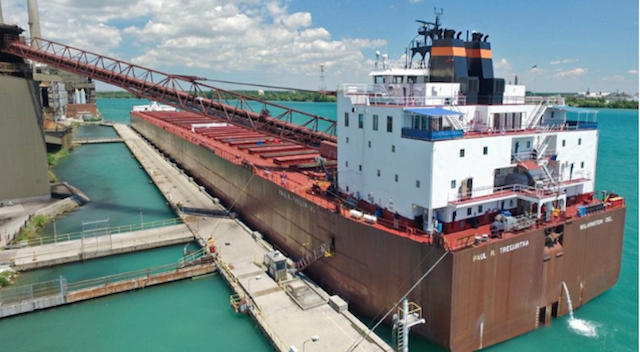The U.S.-flag Great Lakes fleet, continues to invest heavily in their ships and the region.
This year alone U.S. Great Lakes shipping companies will invest nearly $87 million in their vessels at shipyards and facilities across the Great Lakes. That includes over $36 million in Wisconsin, $33 million in Ohio, $13 million in Pennsylvania, and over $4 million in Michigan. The work includes replacing steel plating, engine overhauls, navigation equipment updates, and conveyor belt repairs and replacements.
The conveyor belt work is critical as the U.S. Great Lakes fleet of ships are unique with their ability to unload massive amounts of bulk cargo without shoreside assistance. The innovative self-unloading technology allows a 1,000-foot ship to unload 70,000 tons of cargo in eight hours.
“A ship can arrive in the middle of the night with cargo at any number of Great Lakes port facilities, unload before sunrise, and shoreside workers awake to a huge stockpile of raw material critical to their operations positioned perfectly on the dock,” said Jim Weakley, president of Lake Carriers’ Association.
Ships that are 40 and 50 years old, or even older, continue to sail the Great Lakes efficiently because of annual maintenance work performed by Great Lakes shipyards paid for by the U.S.-owned, U.S.-operated and U.S.-crewed vessel operators. The freshwater of the Great Lakes allows vessels to sail for decades while ocean carriers must completely replace their vessels frequently due to the corrosive nature of saltwater and a system built around disposal and replacement over maintenance, unlike the Great Lakes fleet.
Since 1880, the Lake Carriers’ Association has represented the U.S.-flag Great Lakes fleet, which today can move more than 90 million tons of cargos annually that are the foundation of U.S. industry, infrastructure, and energy: iron ore, stone, coal, cement, and other dry bulk materials such as grain, salt, and sand.




